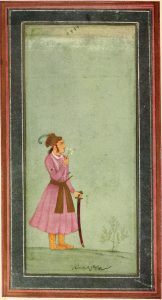Whoa, another big year, 1556 CE:
- In January, Charles of Spain, having divested himself of the Holy Roman Empire in 1555, abdicated from the Kingdom of Spain, retiring to a monastery. He left the Kingdom to his son Philip. End of a long era for Spain.
- Later in January, the Shaanxi Province in China was the epicenter of an earthquake which killed an estimated 830,000 people and was judged to be the deadliest in recorded history.

Map showing Shaanxi and other provinces affected by the quake (Shaanxi is the home-province of the ancient city of Xi’an.) Per English-WP: “More than 97 counties in the provinces of Shaanxi, Shanxi, Henan, Gansu, Hebei, Shandong, Hubei, Hunan, Jiangsu and Anhui were affected. Buildings were damaged slightly in the cities of Beijing, Chengdu and Shanghai.[5] An 840-kilometre-wide (520 mi) area was destroyed,[6] and in some counties as much as 60% of the population was killed.[7] Most of the population in the area at the time lived in yaodongs, artificial caves in loess cliffs; these collapsed in great numbers, causing many casualties.”
- The wokou pirates were meanwhile raiding the whole Chinese coastline from Nanjing to Hangzhou. But in Beijing the Jiajing Emperor was busy asking the Ministry of Rites to find some magical plants to make him immortal. (I guess the 180 additional girls under the age of ten that he had enrolled in “palace service” the previous year hadn’t done the trick?)
-

Painting of Akbar soon after his coronation Another big shocker, in February 1556! Last year, we left the Mughal emperor Humayun having just reconquered much of his previous empire from the Suirs… This year, he died in January; but his court kept it secret till February when they announced that his son Akbar, now 13, would succeed him. Akbar, as you may recall from last year, had been born during his dad’s lengthy exile; and his dad was moving around so much in those days that he left Akbar in Kabul to be raised by two of his brothers. Dad (Humayun) would have major fallings-out with those brothers but little Akbar’s education was apparently not much affected. When Humayun fell ill and died, his main military commander, Bairam Khan, organized the succession and acted as regent until Akbar reached his majority. Akbar would become an outstandingly successful and innovative leader who ruled over much of India until he died in 1605. Stay tuned! (The banner image above shows two faces of a silver rupee of Akbar’s era.)
-

Plantations in Ireland planted by Mary & her Tudor successors England’s King Mary (still not producing an heir) initiated a process of strengthening English control over Ireland by implanting English colonists in two “Plantations” in the middle of the country, well beyond the “Pale” of previous English-royal control. She was, as we know, a fervent Catholic, and was busy at home persecuting and burning at the stake various Protestant churchmen. Perhaps the “Plantations” project in Ireland was supposed to be a nod to English-national unity? Anyway, it was one that her Protestant successors in the English monarchy would embrace with gusto, adding a strong anti-Catholic flavor to the whole project, which over the 350-plus years that followed would inflict truly horrible suffering on Ireland’s indigenous people.
- Over in Russia, Tsar Ivan conquered Astrakhan, opening the Volga River to Russian traffic and trade.
-

Map of Portuguese India. Click on it for the original. In 1556, in Portuguese-run Goa, on the West coast of India, the Jesuits installed India’s first-ever printing-press in a small college they had established there 15 years earlier. Intriguingly, the printing-press in question had originally been destined to go to the Portuguese allies in Abyssinia (Ethiopia.) But it traveled “via” Goa (?) and somehow ended up there. I was delighted to find this map of Portuguese India, by Maximilian Dorrbecker.
- Ignatius Loyola, a Spanish/Basque priest who was a co-founder of the Jesuits, died in Rome.
- Richard Chancellor, the English mariner who’d been the first to sail to Russia a couple years earlier, also died. In 1555, he’d set out on his second voyage to Russia, and he spent the summer there dealing with the tsar, organizing trade– and still trying to learn how China might be reached a “Northeast Passage.” In July 1556 he, “departed for home, taking with him the first Russian ambassador to England, Osip Nepeya. The fleet consisted of four ships…” Along the coast of Norway the weather turned bad. Two of the ships tried to enter the fjord at Trondheim but were never heard of again. Another successfully wintered in Trondheim and arrived in London the next year. The ship carrying Chancellor and Nepeya did not attempt to enter the fjord. It reached the Scottish coast; but in November 1556 it was driven ashore near Aberdeen by a storm. “Most of the crew, including Chancellor, lost their lives. Only the Russian envoy and a few others survived and reached London the following year.” I wonder what impression the whole business made on the Russian ambassador?
